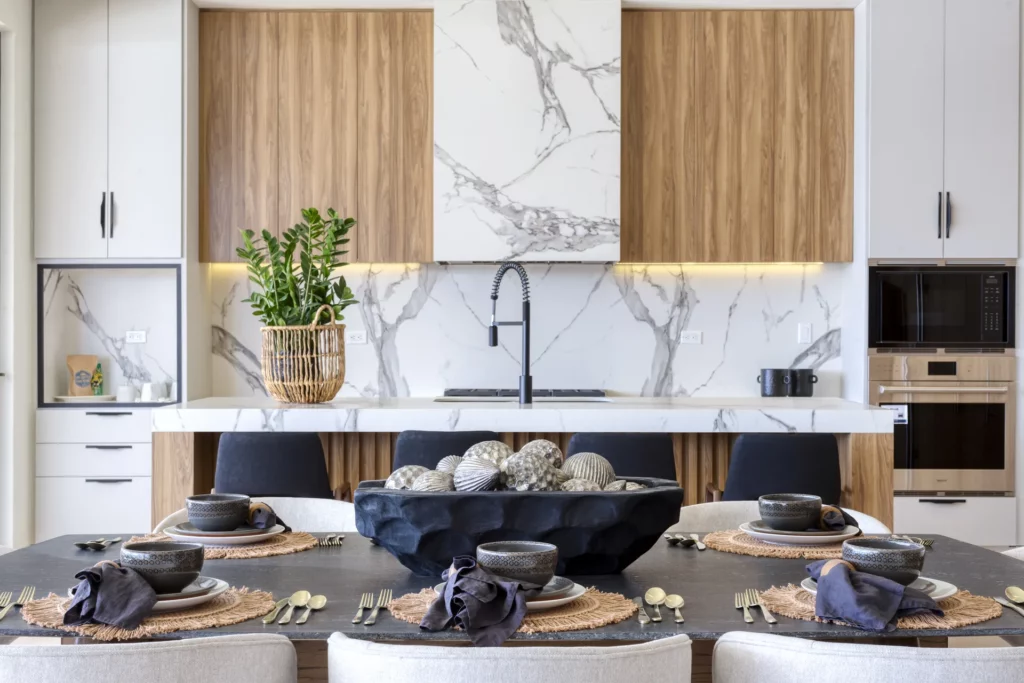
The dining room table is now commonplace in most households, but many likely don’t know the history and cultural significance behind it.
In recent years, our dining tables turned into not only where we eat our meals but conference room tables, classroom desks, and more during the pandemic. So, let’s look back at how it all started and see what the cultural origins of this piece of furniture are.
Early Beginnings: 1800s Victorian England
While the Greeks had some of the earliest versions of a dining room table where they would hold symposiums and entertain guests, the American dining room, as we’re familiar with, has roots in Victorian England in the 1800s.
Marker of Wealth and Status
Early on, having a dining table in your home was seen as a sign of wealth and dignity. That you could afford such a piece of furniture represented being a part of the upper echelon of society–something not afforded to everyone.
Many early dining room sets were regal matching pieces in quality wood, which the older generations decorated fancifully and carefully. This is a practice that continued on to the 1900s.
Instrument for Homemaking
Beyond the table itself, many housewives who viewed the dining room as the cornerstone of their home took a lot of pride in creating a warm ambiance each night when the family sat down for a meal.
The practice of collecting fine china or pieces of dinnerware saved for special occasions was a staple during this time, which gave the women a way to show off their savviness with art and an eye for beauty.
This, in addition to showing off their fine linens, chairs, placemats, silver, and other items, became the norm and was very popular in the 1800s and continued through the early decades of the 20th century as well.
Transition to Casual and Relaxed
Around the 1920s, historians show a distinct shift in the American way of dining towards a more casual and relaxed practice, partially by the innovation of appliances in the kitchen like the icebox and electric stove.
At this time, the kitchen was being advertised as a place to show off your new technology, entertain friends, and curate your own style. And with the boom in new constructions following WWII, this trend largely took off.
Thus, many mark the 1940s as when Americans transitioned from formal dining rooms to eat-in kitchens. There are many other trends from the 50s that show why eating in the kitchen overtook the dining room table, like Americans working longer hours, the advent of TV dinners, and the overall emphasis on the kitchen by marketers and home manufacturers.
In recent decades, trends like open floor plans and farmhouse kitchens took hold as a place where busy families could do more of their nighttime activities together in one space, a sort of hub for the home. So even though the dining table has lost some of its prominence in our modern way of life and floor plans, the roots of its cultural significance in our homes cannot be overlooked.
More post from The Agency Los Cabos
[pt_view id=”2b465b3qpg”]






